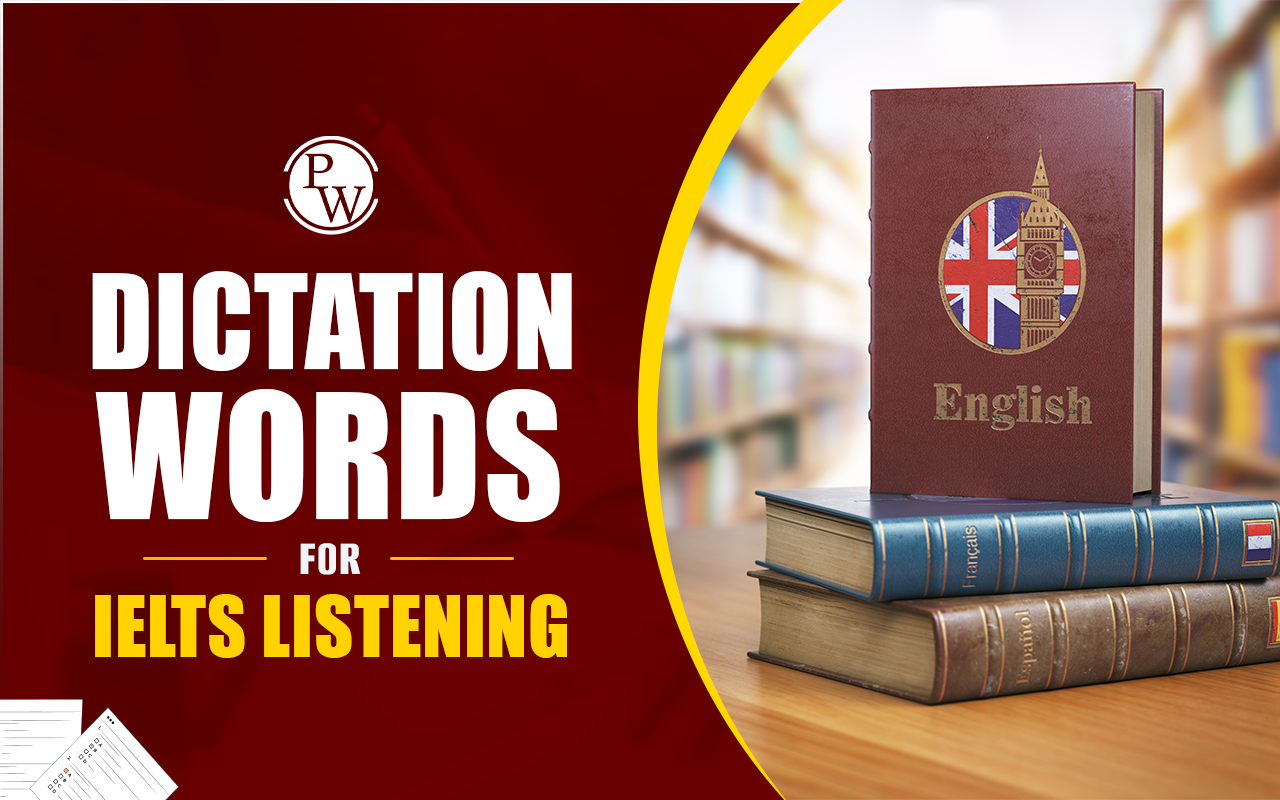
IELTS Band Descriptors: The IELTS Band Descriptors serve as an important assessment tool that determines how examiners rate your performance in the IELTS exam.
It helps IELTS candidates understand their evaluation process by knowing the process that examiners use to determine their IELTS scores. Examiners use IELTS band descriptors to evaluate the Listening, Reading, Writing, and speaking abilities of students during assessments.
These IELTS band descriptors explain the expected competencies which extend from 1 (non-user) through 9 (expert user) levels. IELTS examiners determine IELTS band scores by evaluating candidate performances against these core areas, such as fluency, coherence, vocabulary, grammar, and pronunciation.
Enroll now for the IELTS online courses by PW
IELTS Band Descriptors
In the IELTS test, all candidates scored on a 0-9 scale, where 9 represents the highest level of English proficiency and 0 indicates the test-taker has not attended the test. The IDP IELTS has provided an official description table to determine the level of proficiency among international students based on their assessment scores. The IELTS band descriptors represent the overall result of the candidates, however, separate band descriptors are available for each IELTS test section on its official website.
|
IELTS Band Descriptors |
||
|---|---|---|
|
IELTS Band Score |
Skill Level |
Description |
|
9 |
Expert |
The test taker has complete mastery of the language, demonstrating fluent, accurate, and appropriate usage with a deep understanding. |
|
8 |
Very good |
The test taker has a near-complete command of the language with only rare errors or inappropriate usage. They may struggle slightly in unfamiliar situations but can handle complex discussions effectively. |
|
7 |
Good |
The test taker has strong control over the language, though occasional errors, misinterpretations, or inappropriate usage may occur. They generally manage complex language well and grasp detailed reasoning. |
|
6 |
Competent |
The test taker can communicate effectively despite some inaccuracies or misunderstandings. They are comfortable using moderately complex language, particularly in familiar settings. |
|
5 |
Modest |
The test taker has a partial grasp of the language and can understand general meaning in most scenarios, though they tend to make frequent mistakes. They can manage basic communication in their own field. |
|
4 |
Limited |
The test taker’s ability is restricted to familiar situations. They struggle with understanding and expressing ideas clearly. |
|
3 |
Extremely limited |
The test taker can only convey and understand general meaning in very familiar contexts. Communication often breaks down. |
|
2 |
Intermittent |
The test taker finds it extremely difficult to comprehend spoken and written English. |
|
1 |
Non-user |
The test taker has no functional ability in the language except for a few isolated words. |
|
0 |
Did not attempt the test |
The test taker did not respond to any questions. |
| IELTS Reading Band Score | IELTS Listening Band Score |
| IELTS Speaking Band Score | IELTS Writing Band Score |
IELTS Test Sections and Scoring Criteria
The IELTS test has four sections: Listening, Reading, Writing, and Speaking. Each section is scored separately, and the total IELTS band score is calculated by calculating the average score for each section.
IELTS Listening Band Descriptors
The IELTS Listening test consists of 40 questions, with each correct answer earning 1 mark. The total score is then converted into the 9-band scale. Scores are given in whole and half bands.
Here’s an approximate guide to the number of correct answers required for different band scores:
-
Band 5: 16 correct answers
-
Band 6: 23 correct answers
-
Band 7: 30 correct answers
-
Band 8: 35 correct answers
IELTS Reading Band Descriptors
The IELTS Reading test also contains 40 questions. Each correct answer earns 1 mark, and the final score is converted into the 9-band scale. The Academic Reading test has a more complex vocabulary and a formal style. The IELTS Academic Reading test is more complex in terms of vocabulary and has a more formal style than the General Training test. Below are the IELTS band descriptors for both Academic and IELTS General Training tests.
Academic Reading:
-
Band 5: 15 correct answers
-
Band 6: 23 correct answers
-
Band 7: 30 correct answers
-
Band 8: 35 correct answers
General Training Reading:
-
Band 4: 15 correct answers
-
Band 5: 23 correct answers
-
Band 6: 30 correct answers
-
Band 7: 35 correct answers
IELTS Writing Band Descriptors
In the IELTS Writing section, Tasks 1 and 2 are scored separately. Task 2 carries more weight in the final score. The Writing section is marked based on four criteria, each carrying equal weight:
-
Task Achievement/Task Response
-
Coherence and Cohesion
-
Lexical Resource
-
Grammatical Range and Accuracy
|
IELTS Writing Band Descriptors |
||||
|---|---|---|---|---|
|
Band Score |
Task Achievement/Response |
Coherence & Cohesion |
Lexical Resource |
Grammar & Accuracy |
|
9.0 |
Fully addresses all parts:well-developed ideas. |
Seamless organization. |
Sophisticated vocabulary. |
Accurate and varied structures. |
|
7.0 |
Addresses all aspects with some minor gaps. |
Well-organized, minor issues. |
Good range of vocabulary. |
Minor errors in complex sentences. |
|
5.0 |
Partial response, lacks depth. |
Ideas are linked but sometimes unclear. |
Limited vocabulary use. |
Frequent grammar mistakes. |
IELTS Speaking Band Descriptors
The IELTS Speaking test is a face-to-face interview with an examiner. The test duration is 11–14 minutes and includes three parts:
-
IELTS Speaking Part 1: General Questions about the Candidate
-
IELTS Speaking Part 2: Cue Card + Follow-up Questions
-
IELTS Speaking Part 3: Discussion with the Examiner
The Speaking test is assessed in four key areas:
-
Fluency and Coherence
-
Lexical Resource
-
Grammatical Range and Accuracy
-
Pronunciation
|
Speaking Band Score Descriptors |
||||
|---|---|---|---|---|
|
Band Score |
Fluency & Coherence |
Lexical Resource |
Grammar & Accuracy |
Pronunciation |
|
9.0 |
Effortless speech, well-structured responses. |
Wide vocabulary, natural use. |
No grammar errors. |
Clear and natural pronunciation. |
|
7.0 |
Speaks at length with minor hesitations. |
Good range of vocabulary. |
Occasional grammar mistakes. |
Clear with minor mispronunciations. |
|
5.0 |
Frequent pauses and repetition. |
Limited vocabulary. |
Frequent grammar mistakes. |
Pronunciation issues affecting clarity. |
IELTS Online Course by PW – Join Today!
Guidance of PW IELTS
Physics Wallah offers multiple online IELTS courses for all students. Follow the IELTS pages to better prepare for the exam.
| IELTS Exam Other Related Links | |
|---|---|
| IELTS Registration | IELTS Eligibility Criteria |
| IELTS Exam Pattern | IELTS Academic Vs General |
| IELTS Cut Off | IDP IELTS Slot Booking |
IELTS Band Descriptors FAQs
What is A1, A2, B1, B2, C1, C2 in IELTS?
A1, A2, B1, B2, C1, and C2 in IELTS refer to CEFR levels, which indicate language proficiency. A1-A2 are basic levels, B1-B2 are intermediate, and C1-C2 are advanced.
What are IELTS band descriptors?
Is 6.25 considered as 6.5 in IELTS?
Is 7.0 in IELTS Speaking good?
Q. Can I improve my IELTS score with practice?










